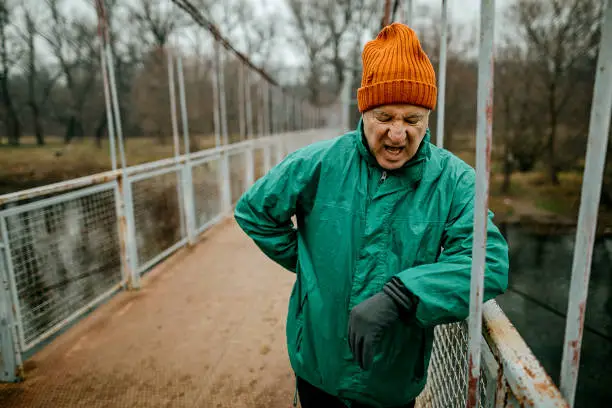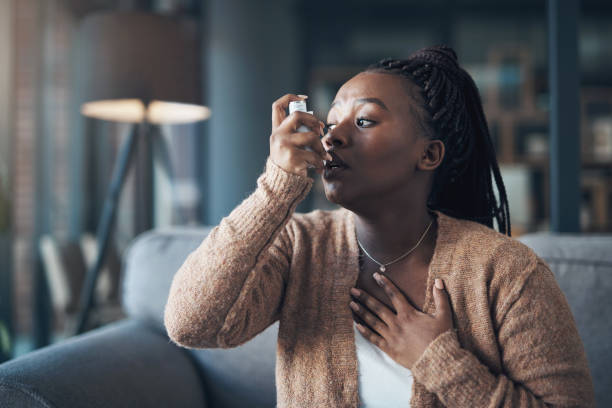There are many acronyms in the world of medicine, one of them is DOE, but what is DOE in medical terms? Let’s see in the article below.
What Is DOE In Medical Terms?
Dyspnea on exertion (DOE) is shortness of breath that occurs during activities such as walking or climbing stairs. It is a common symptom of many respiratory conditions, including asthma, bronchitis, and heart failure. DOE can also be caused by anxiety or panic disorder. Treatment for DOE depends on the underlying condition.
Dyspnea on exertion is a common symptom of many respiratory conditions. The most common cause of DOE is asthma, but it can also be caused by bronchitis, heart failure, and anxiety or panic disorder.
Based on the underlying condition, the treatment for DOE is a matter of choice. Asthma can be treated with medication and avoiding triggers, such as allergens or air pollution. Bronchitis is often treated with antibiotics. Heart failure can be treated with lifestyle changes, such as exercise and diet, and medication. Anxiety and panic disorder are treated with therapy and medication.
Related Article: What Is BUP On A Drug Test?
How To Differentiate DOE In Conditions?

Dyspnea on exertion is a symptom of many conditions, so it can be difficult to differentiate between them. However, some key differences can help. Asthma is typically characterized by wheezing and coughing, while bronchitis is characterized by a persistent cough with mucus. Heart failure often causes fatigue and swelling in the legs and feet. Anxiety and panic disorder often cause chest pain, heart palpitations, and shortness of breath at rest.
When To See A Doctor?
If you experience shortness of breath regularly, you should see a doctor. This is especially true if the shortness of breath is accompanied by other symptoms, such as chest pain or heart palpitations. Shortness of breath can be a sign of a serious condition, so it’s important to get it checked out by a doctor.
What Are The Treatments For DOE?

The treatment for DOE depends on the underlying condition. Asthma can be treated with medication and avoiding triggers, such as allergens or air pollution. Bronchitis is often treated with antibiotics. Heart failure can be treated with lifestyle changes, such as exercise and diet, and medication. Anxiety and panic disorder are treated with therapy and medication.
Prevention Of DOE
There is no one-size-fits-all approach to the prevention of DOE. However, some general tips include quitting smoking, exercising regularly, and avoiding triggers that can worsen symptoms.
Check This Out: What Doctor To See For Numbness In Toes?
What Is The Prognosis For DOE?
The prognosis for DOE is generally good. Most conditions that cause dyspnea on exertion are treatable, and the symptoms often improve with treatment. However, some conditions, such as heart failure, can be chronic and may get worse over time.
DOE Trigger Factors

There are many potential trigger factors for DOE. Some common triggers include allergens, air pollution, smoke, and exercise. Identifying and avoiding these triggers can help prevent or improve symptoms of dyspnea on exertion.
Allergens
Allergens are a common trigger for DOE. Avoiding exposure to allergens is the best way to prevent symptoms. If you are allergic to dust, pet dander, or pollen, you can take steps to avoid these substances. For example, you can keep your home clean and free of dust, vacuum regularly, and wear a mask when you go outside.
Air Pollution
Air pollution is another common trigger for DOE. Outdoor air pollution can be caused by vehicle exhaust, factories, and power plants. Indoor air pollution can be caused by tobacco smoke, cleaning products, and ovens. To avoid air pollution, you can stay indoors on days when the air quality is poor, wear a mask when you go outside, and avoid using products that release pollutants into the air.
Smoke
Smoke from cigarettes, cigars, and fireplaces can trigger DOE. If you smoke, quitting is the best way to prevent symptoms. If you don’t smoke, avoiding exposure to secondhand smoke is important. You can do this by staying away from smokers and places where smoking is allowed, such as bars and clubs.
Exercise
Exercise is a common trigger for DOE. However, it’s important to exercise regularly, as it can help prevent or improve symptoms. If you have DOE, start with gentle exercises and gradually increase the intensity. If you experience shortness of breath during exercise, stop and rest.
If you have severe symptoms, talk to your doctor before starting an exercise program.
List Of Relievers For DOE
There are many potential treatments for DOE, depending on the underlying condition. Some common treatments include medication, avoiding triggers, and exercise.
- Medication
- Avoiding Triggers
- Exercise
Can Exercise Help Relieve Symptoms Of DOE?
Yes, exercise can help relieve symptoms of DOE. Exercise helps improve fitness and lung function and can also help reduce anxiety and stress. If you have DOE, start with gentle exercises and gradually increase the intensity. If you experience shortness of breath during exercise, stop and rest. Talk to your doctor before starting an exercise program if you have severe symptoms.
What Are Some Tips For Living With DOE?
There is no one-size-fits-all approach to living with DOE. However, some general tips include quitting smoking, exercising regularly, and avoiding triggers that can worsen symptoms. Identifying and avoiding triggers is important for managing DOE. Some common triggers include allergens, air pollution, smoke, and exercise.
If you have DOE, talk to your doctor about the best ways to manage your symptoms. They can create a treatment plan that is tailored to your needs.
Article You Might Like: What Does HEENT Mean In Medical Terms?
First Aid For DOE
If you experience shortness of breath, stop what you are doing and rest. Sit or lie down and take slow, deep breaths. If your symptoms don’t improve after a few minutes, call 911 or seek medical help.
Do We Need To Worry About DOE?
No, you don’t need to worry about DOE. Most conditions that cause dyspnea on exertion are treatable, and the symptoms often improve with treatment. However, some conditions, such as heart failure, can be chronic and may get worse over time. If you have DOE, talk to your doctor about the best ways to manage your symptoms. They can create a treatment plan that is tailored to your needs.
Good Reads: When To Stop Chiropractic Treatment?
What Is The Bottom Line?
The bottom line is that DOE is a condition that causes shortness of breath during physical activity. It is important to identify and avoid triggers that can worsen symptoms. Exercise can help relieve symptoms of DOE. If you have severe symptoms, talk to your doctor before starting an exercise.
In Conclusion
Dyspnea on exertion (DOE) is a type of shortness of breath that occurs during physical activity. It can be caused by a variety of conditions, including heart disease, lung disease, and anxiety disorders. Treatment for DOE depends on the underlying cause. Some common treatments include quitting smoking, exercising regularly, and avoiding triggers that can worsen symptoms. With treatment, most people with DOE can manage their symptoms and live normal, active lives.
